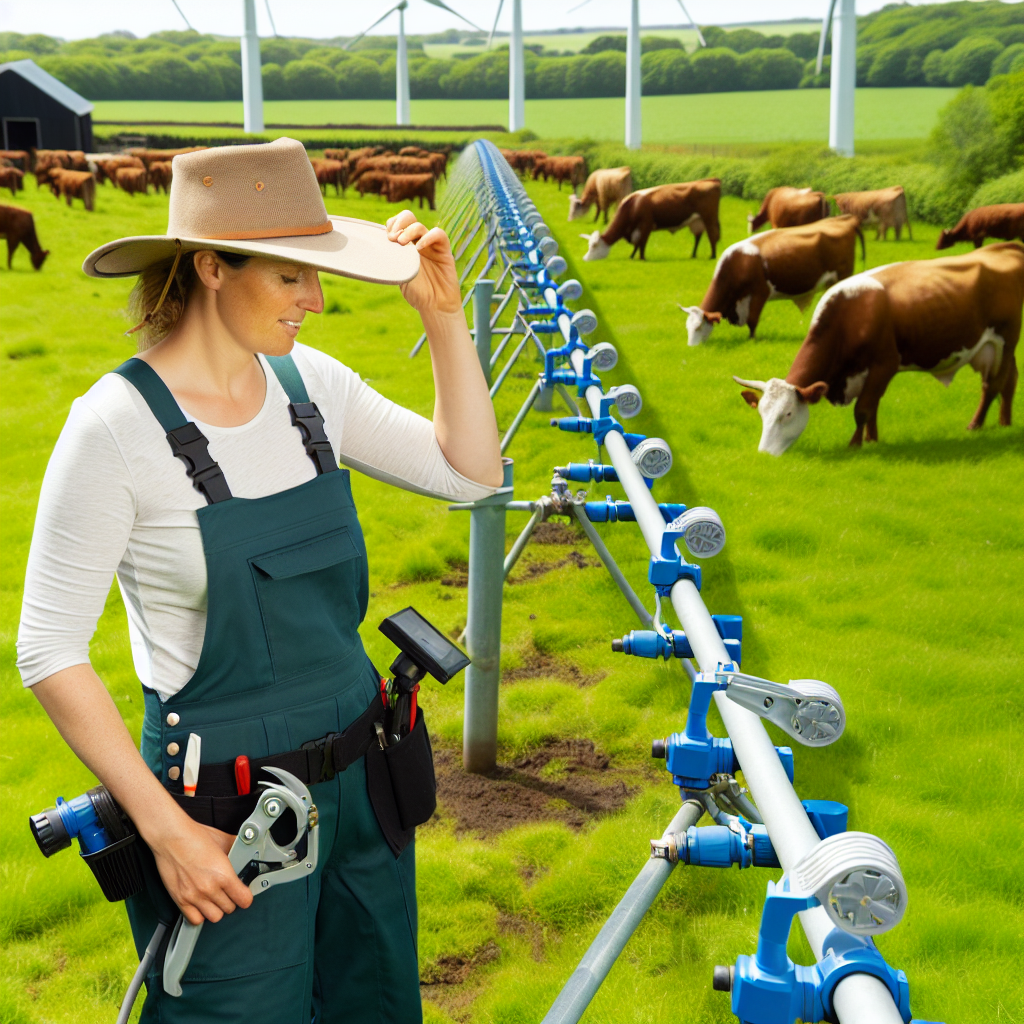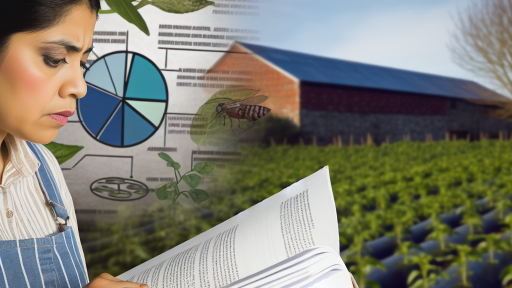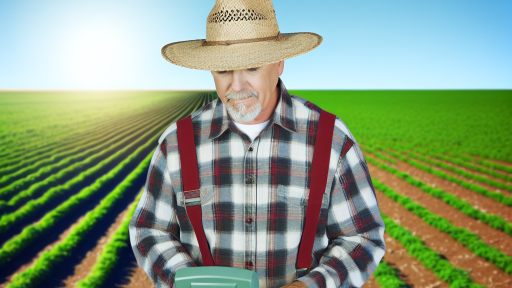Introduction to Sustainable Livestock Water Management
Sustainable livestock water management is essential for healthy ecosystems.
It focuses on effective usage of water resources.
This management practice supports livestock production and conservation.
Additionally, it helps farmers adapt to climate change challenges.
Defining Sustainable Practices
Sustainable water management starts with understanding water needs.
Livestock requires adequate water for drinking and grazing.
Moreover, agricultural practices impact water quality and availability.
Importance of Efficient Water Use
Efficient water use reduces costs for farmers.
It also minimizes the environmental footprint of livestock operations.
Furthermore, proper usage ensures longer-term water availability.
Techniques for Sustainable Management
- Rainwater harvesting collects and utilizes natural rainfall.
- Water recycling reduces waste and increases efficiency.
- Precision irrigation minimizes overuse of water resources.
Integrating Community Efforts
Community involvement is key to sustainable practices.
Farmers can share resources and knowledge with one another.
This collaborative approach enhances water management strategies.
Technological Innovations
Technology offers new solutions for water management.
Smart irrigation systems optimize water distribution.
Transform Your Agribusiness
Unlock your farm's potential with expert advice tailored to your needs. Get actionable steps that drive real results.
Get StartedRemote sensing tools help monitor livestock water needs.
Importance of Water Management in Sustainable Farming
Key Role of Water in Agriculture
Water serves as a vital resource for all agricultural practices.
It supports livestock health and productivity directly.
Additionally, it influences crop yield and quality significantly.
Challenges of Water Scarcity
Many regions face increasing water scarcity due to climate change.
This scarcity threatens the sustainability of farming systems.
Furthermore, over-extraction of water resources leads to depletion.
Benefits of Effective Water Management
Effective water management enhances overall farm productivity.
It reduces operational costs associated with water usage.
Also, it contributes to healthier ecosystems surrounding farms.
Water Conservation Strategies
Farmers can implement various strategies to conserve water.
- Rainwater harvesting systems capture runoff effectively.
- Drip irrigation minimizes water use in cropping systems.
- Soil moisture monitoring optimizes watering schedules.
Enhancing Soil Health Through Water Management
Proper water management improves soil health and structure.
Healthy soils retain moisture and nutrients more efficiently.
This results in better crop resilience to drought conditions.
Community Collaboration and Education
Farmers should collaborate with local communities for shared water resources.
Education on sustainable practices also empowers farmers.
Together, they can promote responsible water usage and management.
Assessing Water Needs for Different Livestock Types
Understanding Water Requirements
Each livestock type has unique water requirements.
Factors such as age, weight, and climate significantly influence these needs.
Furthermore, specific life stages also affect water consumption.
Cattle Water Needs
Cattle require substantial water, averaging 10 to 15 gallons daily.
Heat stress can increase their needs considerably.
For instance, during hot months, water intake may double or triple.
Pork Production Water Requirements
Hogs typically consume about 5 to 8 gallons of water each day.
Showcase Your Farming Business
Publish your professional farming services profile on our blog for a one-time fee of $200 and reach a dedicated audience of farmers and agribusiness owners.
Publish Your ProfileHowever, sows nursing piglets need significantly more.
This increase can reach up to 20 gallons daily.
Poultry Water Needs
Poultry have lower water needs compared to larger livestock.
Chickens generally drink about 1 to 2 gallons per 100 birds daily.
Water availability is especially crucial in high-temperature conditions.
Small Ruminants and Their Water Consumption
Sheep and goats vary in water intake based on their activity level.
Generally, they require 1 to 4 gallons each day.
Pregnant or lactating females will need more water to support their young.
Impact of Environmental Factors
Climate influences livestock water needs significantly.
Hotter environments result in higher water consumption.
Likewise, humidity levels can either exacerbate or alleviate these needs.
Methods for Accurate Assessment
Monitoring and evaluating livestock water consumption is essential.
Regular checks help to identify patterns and adjust accordingly.
Incorporating technology can streamline this process.
Explore Further: Waste-to-Energy Options for Modern Farms
Rainwater Harvesting Techniques for Livestock
Importance of Rainwater Harvesting
Rainwater harvesting plays a crucial role in sustainable livestock management.
It helps meet the water demands of livestock during dry periods.
Additionally, it reduces dependence on external water sources.
Furthermore, it promotes efficient water use on farms.
Collection Methods
Several effective methods exist for collecting rainwater.
Roofs of barns and other structures can be used as collection surfaces.
Moreover, gutters can direct water into storage tanks.
Some farmers utilize natural ponds as collection areas.
Storage Solutions
Choosing the right storage solution is essential for efficiency.
Above-ground tanks are common and easy to maintain.
Below-ground cisterns offer protection from evaporation and contamination.
Plastic, reinforced concrete, or fiberglass are popular material choices.
Distribution Systems
Effective distribution systems ensure livestock access to stored water.
Gravity-fed systems are simple and often cost-effective.
Pump systems facilitate water transport to various locations.
Regular maintenance of these systems prevents blockages and leaks.
Design Considerations
Proper design maximizes rainwater collection and usage.
First, consider local rainfall patterns when planning systems.
Next, assess the specific water needs of your livestock.
Additionally, include redundancy in your systems to ensure reliability.
Case Studies of Successful Implementation
Many farmers have successfully implemented rainwater harvesting techniques.
For instance, Maria’s organic farm collects water from barn roofs.
This setup allows her to sustain her livestock healthily during droughts.
Lucas’s cattle ranch uses a combination of above-ground tanks and ponds.
The results show increased productivity and lower costs for water resources.
Showcase Your Farming Business
Publish your professional farming services profile on our blog for a one-time fee of $200 and reach a dedicated audience of farmers and agribusiness owners.
Publish Your ProfileExplore Further: Crop Rotation Strategies for Biodiversity
Efficiency of Drip and Micro-Irrigation Systems
Overview of Drip Irrigation
Drip irrigation delivers water directly to the plant’s roots.
This method increases water efficiency significantly.
Farmers using drip irrigation notice a reduction in water wastage.
Moreover, this technique allows for precise water application.
As a result, it enhances crop growth and yield.
Benefits of Micro-Irrigation
Micro-irrigation encompasses various systems, including drip systems.
This approach minimizes evaporation and runoff.
Consequently, it conserves more water than traditional methods.
Farmers can use micro-irrigation in various soil types.
It promotes optimal moisture levels for better plant health.
Comparative Analysis: Drip vs. Traditional Irrigation
Traditional irrigation methods often lead to oversaturation.
In contrast, drip systems apply water precisely when needed.
This targeted application reduces the likelihood of disease.
Moreover, drip irrigation lowers labor costs compared to flooding systems.
Implementation Challenges
While effective, drip and micro-irrigation systems require investment.
Initial costs may deter some farmers from adopting them.
Regular maintenance is essential to avoid clogs and leaks.
However, the long-term benefits often outweigh these challenges.
Case Studies of Successful Implementation
In Australia, farmers have reported significant water savings after switching.
For example, the Thompson family increased their crop yield by 30%.
Similarly, in California, the Garcia farm doubled its efficiency.
These cases demonstrate the potential of drip irrigation.
Many farmers are adopting this technology to improve sustainability.
Learn More: Building a Zero-Waste Farm: Strategies and Tips
Utilizing Water Recycling and Treatment Methods
Importance of Water Recycling in Livestock Management
Water recycling conserves precious resources in livestock operations.
It helps reduce the ecological footprint of farming activities.
Farmers can optimize water use through effective recycling methods.
Techniques for Effective Water Recycling
Implementing rainwater harvesting systems proves beneficial for livestock farms.
This technique collects and stores rainwater for future use.
Additionally, constructing retention ponds captures runoff water.
Farmers can use this stored water for irrigation and livestock.
Advanced Treatment Methods for Water Quality
Employing advanced filtration systems enhances water quality for livestock.
Filtration processes remove contaminants and improve safety.
Relying on biofiltration utilizes natural organisms to purify water.
Integrating Greywater Recycling
Recycling greywater offers another avenue for sustainable water use.
Farmers can treat and repurpose water from sinks or showers.
This water is suitable for non-potable uses in livestock operations.
Monitoring and Management Systems
Implementing digital management systems boosts efficiency in water use.
Smart sensors can track water levels and usage patterns.
Showcase Your Farming Business
Publish your professional farming services profile on our blog for a one-time fee of $200 and reach a dedicated audience of farmers and agribusiness owners.
Publish Your ProfileData collected assists in making informed decisions on water management.
Benefits of Sustainable Water Management
Sustainable water management increases operational resilience in livestock farming.
It leads to cost savings by minimizing water waste.
Furthermore, adopting these practices enhances the farm’s reputation.
Consumers increasingly prefer environmentally friendly production methods.
Uncover the Details: Promoting Pollinators for Healthier Crops

Implementing Rotational Grazing to Reduce Water Consumption
Understanding Rotational Grazing
Rotational grazing involves moving livestock between pastures regularly.
This method promotes healthier soil and reduced water usage.
Additionally, it helps maintain better forage quality.
Benefits of Rotational Grazing
Rotational grazing can significantly lower water consumption in livestock operations.
First, it prevents overgrazing in a single area.
As a result, pasture regrowth provides more moisture retention.
Moreover, healthier pastures absorb rainfall more effectively.
Implementing a Rotational Grazing System
Establishing a rotational grazing system requires careful planning.
First, assess your land’s layout and existing water sources.
Next, divide pastures into smaller sections for grazing.
Use temporary fencing to create a flexible grazing plan.
Monitoring and Adjusting the Grazing Schedule
Regular monitoring of pasture conditions is essential.
This includes checking for signs of overgrazing or underutilization.
Adjust the grazing schedule based on these observations.
Thus, it helps optimize grass growth and reduce water usage.
Involving Livestock Behavior
Understanding livestock behavior is crucial for successful grazing.
Every species has distinct grazing habits and preferences.
Design your rotation schedule to accommodate these behaviors.
In this way, you ensure efficient forage use and improved water conservation.
Community Support and Knowledge Sharing
Engaging with local agricultural communities offers valuable insights.
Share experiences and techniques with fellow farmers.
Cooperating with others enhances learning opportunities and success rates.
Ultimately, a community-centric approach leads to sustainable practices.
Monitoring Water Quality and Availability in Livestock Systems
Importance of Water Quality
Water quality directly impacts livestock health and productivity.
High-quality water ensures optimal growth and reproduction.
It also prevents diseases that can arise from contaminated water.
Monitoring water sources is critical for sustainable livestock management.
Regular Water Testing
Conduct regular tests to assess water quality parameters.
Focus on pH, nutrients, bacteria, and contaminants.
Utilize kits that provide accurate and timely results.
Engage local agricultural extension services for guidance.
Water Availability Assessment
Evaluate water availability throughout the year.
Assess seasonal variations in water sources.
Track rainfall patterns and their impact on water supply.
Showcase Your Farming Business
Publish your professional farming services profile on our blog for a one-time fee of $200 and reach a dedicated audience of farmers and agribusiness owners.
Publish Your ProfileImplement storage solutions to capture rainwater.
Implementing Management Practices
Adopt practices that promote sustainable water usage.
Use rotational grazing to prevent overgrazing.
Install watering systems that reduce evaporation.
Redistribute livestock to maintain water source balance.
Utilizing Technology for Monitoring
Employ smart water management systems for monitoring.
Use sensors to track water levels and quality in real-time.
Remote monitoring tools enhance data collection efficiency.
Data analytics can help predict water needs and shortages.
Collaboration with Local Authorities
Work with local water management authorities for support.
Engage in community initiatives to manage water resources.
Participate in educational programs focused on sustainable practices.
Share knowledge and resources with fellow farmers.
Case Studies of Successful Sustainable Water Management Practices
Implementing Rainwater Harvesting in Australia
Rainwater harvesting proves effective for livestock operations in Australia.
This method captures and stores rainwater for future use.
Farmers like David Thompson utilize this technique to reduce dependence on groundwater.
Furthermore, it provides a reliable water source during dry seasons.
Integrating Agroforestry in the United States
Agroforestry combines agriculture and forestry practices.
In the United States, farmers like Sarah Mitchell have adopted this approach.
She plants trees alongside pastures to enhance water retention in the soil.
This strategy improves soil quality and delivers shade for livestock.
As a result, animals experience less heat stress during operations.
Constructing Artificial Wetlands in Europe
Artificial wetlands serve as natural water filtration systems.
In Europe, the Green Land Organization builds these wetlands for livestock farms.
These systems improve water quality by filtering pollutants from runoff.
Thus, they contribute to healthier ecosystems while supporting farm operations.
Using Effluent Management Systems in New Zealand
Effluent management systems optimize water use in New Zealand’s dairy farms.
Farmers such as James Barker implement lagoons for treating wastewater.
This practice recycles water for irrigation and livestock needs.
Consequently, farms use fewer resources while minimizing environmental impact.
Adopting Conservation Tillage in Canada
Conservation tillage promotes soil water retention in Canada.
Farmers like Emma Robinson embrace this practice to minimize soil disturbance.
This approach helps maintain soil structure and moisture levels.
As a result, livestock benefits from better grazing conditions throughout the year.
Developing Community-Based Water Management in Kenya
Community-based water management empowers farmers in Kenya.
Local groups form committees to oversee water resources and distribution.
This collaboration ensures equitable access to water for livestock.
Additionally, it promotes sustainable practices that protect local ecosystems.
Additional Resources
What is Sustainable Agriculture? | Sustainable Agriculture Research …
Irrigation & Water Use – USDA ERS
Showcase Your Farming Business
Publish your professional farming services profile on our blog for a one-time fee of $200 and reach a dedicated audience of farmers and agribusiness owners.
Publish Your Profile



